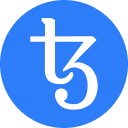Coinbase
Como comprar Tezos
Temos boas notícias! Você pode comprar Tezos na exchange centralizada da Coinbase. Incluímos instruções detalhadas para facilitar sua compra de Tezos.
Leia mais



Abra uma conta para comprar e vender Tezos na Coinbase, a exchange de criptomoedas mais segura.
Ganhe criptomoedas depois de fazer sua primeira compra. Oferta sujeita a termos.

Soma da média das economias estimadas e recompensas ganhas por usuário, em 2021, nos vários programas da Coinbase (exceto sorteios). O valor inclui isenções de comissão na Coinbase One (fora o custo da assinatura), cashback do Coinbase Card e recompensas de staking.
O preço de Tezos increased 2,10% na última hora e increased 0,30% nas últimas 24 horas. O preço de Tezos também risen 4,73% na última semana. O preço atual é de R$ 5,26 por XTZ com um volume de negociação em 24 horas de R$ 149,66 mi. Atualmente, o valor de Tezos está 88,87% abaixo de sua máxima histórica de R$ 47,26. Esse valor recorde foi o maior valor pago por Tezos desde o lançamento.
A oferta em circulação atual de Tezos é 979.371.551,454 XTZ , o que significa que a capitalização de mercado total de Tezos é de 979.371.551,454.
Navegue pelo mundo dos perfis do Ethereum Name Service (ENS). Conecte-se, aprenda e interaja com a comunidade da Web3 em profile.coinbase.com. Confira abaixo alguns dos perfis mais populares do ENS.
Partes do conteúdo foram elaboradas por terceiros não afiliados à Coinbase Inc. ou a nenhuma de suas afiliadas, e a Coinbase não se responsabiliza por tal conteúdo. A Coinbase não é responsável por nenhum erro ou atraso no conteúdo, ou por qualquer ação realizada com base no conteúdo. As informações são fornecidas somente em caráter informativo e não constituem recomendações de investimento. Não estamos recomendando que você compre ou venda um ativo digital específico nem que adote uma estratégia de investimentos em particular. A Coinbase não oferece nenhuma garantia sobre a precisão, adequação ou validade das informações oferecidas ou de ativos específicos. Os preços são somente para fins ilustrativos. Os preços reais das criptomoedas e outros dados associados são variáveis. Os dados apresentados podem refletir ativos negociados na exchange da Coinbase, bem como em outras exchanges de criptomoedas.